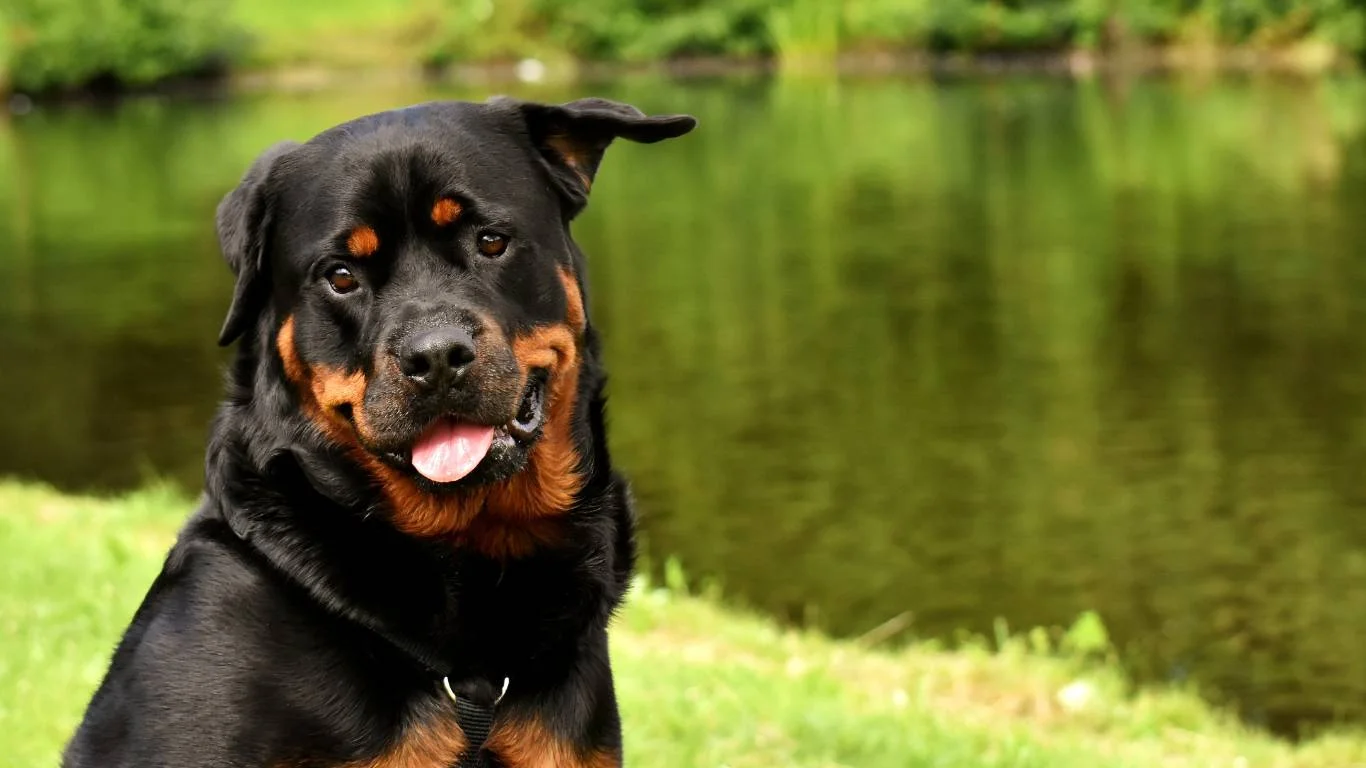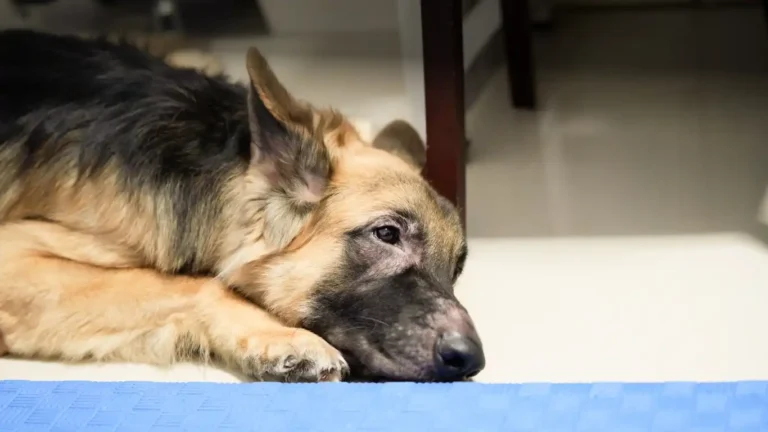Dangers of Obesity in Dogs and How to Prevent It: Essential Tips for a Healthy Dog
As a pet nutritionist and care expert with years of experience working in veterinary clinics, I’ve seen firsthand how obesity can dramatically impact a dog’s health. Many dog owners are unaware of the dangers of obesity in dogs and how it can affect their furry friend’s quality of life. It’s not just about a few extra pounds; obesity can lead to serious long-term health problems like diabetes, heart disease, and joint issues. And while these are scary to think about, the good news is that obesity is preventable with the right care, diet, and exercise routine. In this article, we’ll explore the dangers of obesity in dogs and offer practical tips on how to keep your dog healthy and fit for years to come.
The Growing Problem of Obesity in Dogs

Obesity in dogs has become an alarming trend in recent years. According to the Association for Pet Obesity Prevention (APOP), over 50% of dogs in the United States are classified as overweight or obese. This statistic is concerning because, just like in humans, excess weight can have detrimental effects on a dog’s health. Many dog owners think of their pets as family members, often indulging them with extra treats or large portions of food. However, what seems like a small gesture of affection can have a negative impact on their health.
Why Obesity in Dogs is More Than Just a Weight Problem
Obesity isn’t just about looks; it’s about overall health. As a pet care expert, I’ve seen how weight gain can affect everything from a dog’s energy levels to its life expectancy. The extra pounds put unnecessary stress on their joints, making movement more difficult. This can lead to painful conditions like arthritis, which not only reduces their mobility but also affects their quality of life. Dogs with obesity are also at higher risk of developing heart disease, diabetes, high blood pressure, and even some types of cancer.
The Hidden Dangers of Obesity
While some pet owners may think that obesity simply means a chubby dog, the reality is far more serious. Overweight dogs are prone to a variety of health issues that can be life-threatening. Here’s a breakdown of some of the hidden dangers:
- Joint Problems: Excess weight puts added strain on a dog’s joints, which can lead to painful conditions such as arthritis. Over time, this can severely limit their ability to move comfortably and enjoy daily activities.
- Diabetes: Obesity is one of the leading causes of diabetes in dogs. When a dog is overweight, it can develop insulin resistance, which means the body can’t regulate blood sugar levels properly.
- Heart Disease: Carrying excess weight makes the heart work harder, leading to potential heart disease. Obese dogs are more likely to suffer from heart conditions, which can reduce their life expectancy.
- Reduced Life Expectancy: Studies have shown that obese dogs tend to live shorter lives. By maintaining a healthy weight, you can increase your dog’s chances of living a longer, healthier life.
How to Prevent Obesity in Dogs

The good news is that preventing obesity in dogs is completely within your control. As a pet nutritionist, I always tell dog owners that the best defense against obesity is a balanced approach to their dog’s diet and exercise. Here’s what you can do:
1. Portion Control and Healthy Diet
One of the biggest mistakes I see pet owners making is overfeeding. It’s easy to give in to those puppy-dog eyes, but too many treats and a lack of portion control can lead to unnecessary weight gain. Ensure you are feeding your dog the right amount of food based on their age, breed, size, and activity level. Consult with your vet or a pet nutritionist to determine the right amount of food for your dog. And don’t forget, treats should be counted as part of their daily calorie intake!
2. Choose a High-Quality Dog Food
Not all dog food is created equal. Some brands are packed with fillers and low-quality ingredients that can contribute to weight gain. Opt for high-quality dog food with real meat as the primary ingredient and avoid foods with excessive grains, sugars, and artificial additives. A good diet is essential for maintaining a healthy weight, and choosing the right food can make a huge difference in your dog’s overall well-being.
3. Regular Exercise is Key

Exercise is another crucial factor in preventing obesity. Regular physical activity not only helps your dog burn calories but also keeps their muscles and joints strong. It doesn’t have to be intense workouts every day; simple activities like daily walks, fetch, or swimming can work wonders. Try to make exercise a fun, routine part of your dog’s life. They’ll look forward to it, and you’ll get the added benefit of spending quality time together.
4. Monitor Your Dog’s Weight
Just like with humans, regular check-ups are essential to track progress. Weigh your dog regularly and keep an eye out for any noticeable weight gain. If you’re unsure about how to assess your dog’s weight, ask your vet to show you how to check your pet’s body condition. Keeping track of their weight will help you spot any changes early and make adjustments before the situation gets out of hand.
Understanding the Risks: A Personal Experience
As a pet nutritionist, I’ve worked with countless dogs and seen how obesity can silently impact their lives. One particular case that sticks out to me is Max, a lovable Labrador who came in for a routine check-up. Max had been steadily gaining weight for months, but his owner didn’t notice the gradual changes. By the time they realized Max was overweight, he was showing signs of arthritis and was having trouble keeping up with his daily walks. His energy levels were low, and he was more prone to infections due to a weakened immune system. Fortunately, with a dedicated diet and exercise plan, Max made a full recovery, and we were able to get him back to his happy, energetic self. His story is a reminder that obesity can sneak up on dogs, and by catching it early, you can prevent a host of health problems down the line.
Understanding the Signs of Obesity in Dogs

So, how do you know if your dog is obese or just a little on the chubby side? It’s not always easy to tell, especially when they have that adorable, soft belly. But it’s crucial to recognize the signs early, before the extra pounds become a serious health issue. As a pet nutritionist, I often find that owners are unsure about the symptoms of obesity. This is one of the main reasons why obesity in dogs often goes unnoticed for far too long. If you’re worried about your dog’s weight, here are a few things to look out for:
1. Inability to Feel Your Dog’s Ribs
One of the easiest ways to assess whether your dog is overweight is by feeling their ribs. When your dog is at a healthy weight, you should be able to feel their ribs without pressing too hard. If you can’t feel them, it might be a sign that they are carrying excess weight. If your dog is obese, you may find it difficult to feel their ribs even with some pressure. It’s a good idea to check this regularly, as it’s a quick way to gauge their condition.
2. Overweight Belly and Lack of Waistline
Obesity often results in a visible change in shape. Your dog should have a defined waistline when you look at them from above. If their sides appear round or their belly protrudes, it could be an indication that they’re carrying excess weight. I remember a client who brought in her Beagle, Charlie, for a regular check-up. Charlie had a noticeable belly and lacked any definition in his waist. His owner was shocked when I explained that his condition wasn’t just the result of aging; it was the effect of being overweight. After some changes to his diet and exercise, Charlie quickly lost weight and regained a more defined figure.
3. Decreased Energy Levels
When dogs are overweight, they often struggle with energy levels. The extra weight makes it harder for them to play, run, or enjoy their usual activities. If your dog is sluggish or less enthusiastic about their walks, it could be a sign that their weight is affecting them. I’ve seen many dogs become more lethargic as they put on weight, and their owners assume it’s just due to age. But in reality, it’s the weight causing them to feel less energetic.
4. Difficulty Moving or Joint Pain
Obesity can have a direct impact on your dog’s joints. The extra weight adds pressure on their hips, knees, and spine, which can lead to pain or even arthritis. Dogs with obesity might be reluctant to jump, run, or climb stairs, which can be heartbreaking for their owners. I’ve treated several dogs with joint pain related to obesity, and once their weight was reduced, they showed incredible improvements in mobility and overall comfort.
The Role of Genetics in Obesity

As much as we’d like to think that obesity is simply a result of poor feeding or lack of exercise, genetics can also play a significant role in whether or not a dog is predisposed to obesity. Some dog breeds are more prone to carrying extra weight than others. Breeds like Labradors, Dachshunds, and Beagles are known to have a higher risk of obesity due to their genetics, even when they are given the proper diet and exercise.
Understanding Breed-Specific Risks
Certain breeds have a genetic predisposition to gaining weight. For example, I’ve worked with many Labrador Retrievers and seen how quickly they can become overweight if not monitored closely. Their love of food combined with their slower metabolism makes them particularly vulnerable. It’s not that these breeds are doomed to obesity, but owners of these breeds need to be extra vigilant. This might mean being stricter with portion control, limiting treats, or increasing the frequency of exercise.
On the flip side, smaller breeds like Chihuahuas or Yorkshire Terriers may have a faster metabolism, but that doesn’t mean they’re immune to obesity. Small dogs often require fewer calories than larger breeds, so it’s important to be cautious about portion sizes, even with smaller pets. In my experience, small dog owners often make the mistake of thinking their tiny dog can eat as much as a larger breed, not realizing that small dogs are just as prone to weight gain if they overeat.
How to Handle Breed-Specific Weight Management
For breeds prone to obesity, it’s especially important to start healthy habits early. As soon as you bring a puppy into your home, ensure they are on the right diet for their breed and size. It’s easier to prevent obesity than it is to correct it later on. If you’re unsure about how much food your dog should be eating or how to adjust their diet based on their breed, don’t hesitate to consult a veterinarian or a pet nutritionist for personalized advice. I’ve helped many pet owners tailor their dog’s diet plan based on breed-specific needs, and it’s always rewarding to see the results.
The Importance of Regular Vet Check-ups

Another key component of preventing obesity is regular veterinary check-ups. It’s easy to assume everything is fine if your dog looks healthy, but weight gain can happen gradually, and you might not notice the changes until it’s too late. I always recommend annual check-ups with a vet to monitor not only your dog’s weight but also other health markers. During these visits, your vet will be able to give you a clear picture of your dog’s overall health, check for signs of obesity, and recommend any necessary changes to their diet or exercise routine.
At these check-ups, the vet can also assess your dog’s body condition score (BCS), a scale that ranges from 1 to 9, to help determine if they are underweight, at a healthy weight, or overweight. This helps identify issues early on, so you can make the right adjustments before your dog’s health is compromised.
Remember, preventing obesity isn’t just about controlling your dog’s weight. It’s about creating a healthy lifestyle that includes the right diet, proper exercise, and regular vet visits to monitor progress. By staying on top of your dog’s health, you can help them live a long, happy, and active life, free from the health risks associated with obesity.
Maintaining a Healthy Weight for Your Dog in the Long-Term

Now that you understand the dangers of obesity in dogs and how to prevent it, you might be wondering, “How can I make sure my dog stays healthy for the long haul?” Keeping your dog at a healthy weight requires ongoing attention and commitment, but it doesn’t have to be difficult. As a pet nutritionist, I’ve seen many clients make amazing progress with their pets when they implement small, sustainable changes that fit their lifestyle. The key is consistency, and when it comes to your dog’s health, small changes can add up over time to make a huge difference.
Creating a Long-Term Weight Management Plan
Managing your dog’s weight is not a one-time task; it’s an ongoing commitment. I recommend that owners adopt a balanced approach to their dog’s lifestyle, focusing on long-term health rather than quick fixes. A successful weight management plan should involve a mix of regular exercise, portion-controlled meals, and routine check-ups. It’s essential to monitor your dog’s weight consistently to ensure they’re on track. Sometimes, even slight changes in diet or exercise can make a significant difference, and by staying on top of these adjustments, you can help your dog avoid the dangers of obesity.
Making Exercise a Fun Routine
Exercise doesn’t have to feel like a chore for you or your dog. In fact, exercise can be an opportunity for you to bond with your pet while improving their health. I’ve always found that dogs love routine, so it’s helpful to set up a regular exercise schedule. Whether it’s a daily walk, a game of fetch, or swimming, consistency is key. And remember, the more enjoyable you make it, the more likely your dog will look forward to it. I have a client with a Golden Retriever named Daisy who was having trouble losing weight. Once she started taking Daisy on long hikes and incorporating some interactive playtime, Daisy’s energy levels shot up, and the weight started to melt off. The best part? Daisy loved every minute of it!
Stay Consistent with Their Diet
Maintaining a balanced diet is equally important for long-term weight management. It’s crucial to follow a portion control plan, even if your dog gives you those puppy eyes. Treats can be a great way to show your love, but be mindful of how many calories they’re adding to your dog’s diet. In my experience, many owners unintentionally overfeed their pets because they don’t take into account the extra calories from treats. Just a small handful of extra kibble or a few too many treats each day can add up over time. Always be mindful of what you’re feeding your dog and consider measuring their food to make sure they are getting the right amount.
It’s also essential to choose high-quality, nutritionally balanced food. High-quality dog food supports weight management, as it contains more natural ingredients that keep your dog feeling full and satisfied. I’ve seen dogs who were on lower-quality food struggle with overeating, which could be attributed to the fact that their bodies weren’t receiving the nutrients they needed to feel satiated. Switching to a higher-quality brand can improve their health in more ways than one.
Don’t Forget Regular Vet Check-ups
Another aspect that should not be overlooked is regular veterinary check-ups. Your vet can provide expert guidance on maintaining your dog’s weight and health. In fact, one of the most valuable services vets offer is tracking your dog’s body condition score (BCS), which helps measure if they are underweight, at a healthy weight, or overweight. I recommend that dog owners have their pets checked at least once a year to monitor weight trends, especially if they have a breed that’s more prone to obesity. During these check-ups, your vet can also provide suggestions for adjusting your dog’s diet or exercise plan to meet their changing needs. Early intervention can make all the difference in keeping your dog healthy and avoiding obesity-related diseases.
Understanding the Impact of Obesity on Your Dog’s Quality of Life
Obesity in dogs isn’t just a cosmetic concern – it can seriously impact your dog’s quality of life. As I’ve seen throughout my career, dogs who are overweight tend to be less active, less playful, and more prone to health problems. It breaks my heart to see dogs struggling with pain or fatigue because of their weight, and I know that it’s preventable. When a dog is obese, they can’t do the things they love – whether it’s running around with you at the park, playing fetch, or just enjoying a walk. They might even have a shorter life expectancy. I’ve worked with countless pet owners who have seen dramatic improvements in their dog’s happiness and vitality after making small changes to their diet and exercise routines. When dogs lose weight and regain their energy, they become more active and joyful, which enhances their overall well-being.
The Emotional Toll on You as an Owner
As a pet owner, it can also be emotionally difficult to watch your dog struggle with weight-related issues. You want your dog to be happy and healthy, but sometimes, it can be hard to know where to start when it comes to weight management. I get it. Many pet owners feel guilty for not noticing their dog’s weight gain earlier, but I’m here to tell you – it’s never too late to start. With a little effort, dedication, and the right resources, you can help your dog lead a longer, healthier, and happier life. There’s no need to feel overwhelmed. Start small, be consistent, and celebrate the little victories along the way.
Final Thoughts
Preventing and managing obesity in dogs is essential for ensuring they live a long, healthy, and happy life. With proper care, attention to their diet, and regular exercise, you can help your dog avoid the dangers of obesity and its associated health problems. Remember, it’s about balance – consistency with diet, regular check-ups, and making exercise an enjoyable part of their routine. Your dog depends on you to provide the best care possible, and by maintaining a healthy weight, you’re setting them up for success. Start today and make the commitment to their health – after all, they’re not just pets, they’re family.
Disclaimer: The information provided in this article is intended for general informational purposes only. Always consult a veterinarian or pet nutritionist for personalized advice regarding your pet’s health and dietary needs. The advice shared here is based on my professional experience and the latest industry knowledge, but each pet’s needs may differ.
Visit PawPatron for more expert advice on pet health, nutrition, and care.





